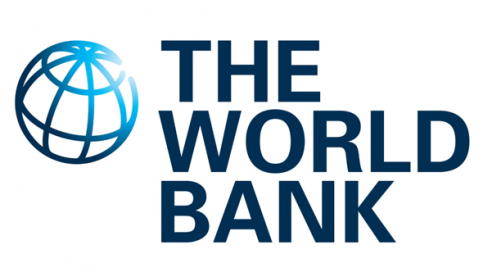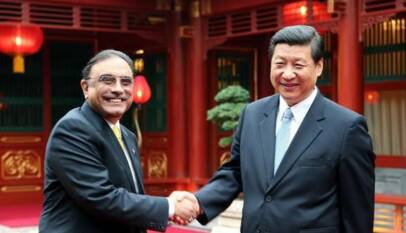Pakistan would be the major beneficiary of CPEC: World Bank
The World Bank (WB) reports thread has highlighted the future impact of Belt and Road Initiative (BRI) and the CPEC. It noted that BRI would boost the socio-economic development of not only its partner countries but non partner states will also be benefited. It projected hike in Pakistan’s GDP and social development mainly under the CPEC. Another study noted Pakistan’s significant role in transit trade under the CPEC. As WB noted backward linkages in Pakistan are flimsy, this area should be focused. Moreover, government should look into time management, tariff modification and promote the friendly environment for foreign investments.
Several studies are now available that analyse the impacts of Belt and Road Initiative and China-Pakistan Economic Corridor projects, but little efforts are made to dissect those studies. Recently, the World Bank has produced a series of reports to analyse the potential impacts of Belt & Route Initiative (BRI), including the China-Pakistan Economic Corridor (CPEC). Reports, Common Transport Infrastructure, A Quantitative Model and Estimates from the Belt and Road Initiative, The Belt and Road Initiative Economic, Poverty and Environmental Impacts, The Belt and Road Initiative Economic, Opportunities and Risks of Transport Corridors, have produced substantial information about the potential impact of the BRI and the CPEC till 2030.
The reports show that 71 countries along the BRI will benefit in terms of GDP increase, welfare, trade, FDI and factor return. The most interesting aspect is that non-BRI countries will also benefit from the gains of BRI-related investments. According to the reports, the BRI will reduce travel time by 12 percent in BRI economies and 3 percent in non-BRI economies. Trade will get a boost between 2.7-9.7 percent and 1.7-6.2 percent in BRI and non-BRI countries, respectively. Real income will see a boost of 1.2-3.4 percent and 0.7-2.9 percent in BRI and non-BRI countries respectively. Further, a 1 percent increase in global real income will be equivalent to $ 930 billion in 2014’s prices. An increase of 3.4 percent and 2.6 percent in GDP of BRI and non-BRI economies is expected till 2030.
The BRI will not only contribute in economic indicators. It will also help the governments tackle social and development issues. For example, it is expected that BRI investment will help to lift 7.6 million people out of extreme poverty (those living on less than $1.90). Further, it will help lift 32 million people out of moderate poverty ($3.20). The major beneficiaries would be developing countries (4.3 million, extreme poverty, 26.7 million moderate poverty). Return to factors of production will also increase and its major beneficiaries would be laboir (1.37 percent).
The reports further reveal that Pakistan would be the biggest beneficiary of CPEC. First of all, due to infrastructure investment Pakistan’s GDP will increase by 6.43 percent till 2030. Reforms in governance like tariffs, ease of doing business and trade facilitation can push the increase to 14.03 percent. Welfare affect would be 5.18 percent and reforms will give further impetus and total increase would be 10.51 percent. It will help to bring out 1.1 million people out of extreme poverty. It also has the potential to boost employment opportunities. Pakistan can have 4 million new jobs. Trade will also witness an increase of 9.8 percent, if Pakistan fully implements the CPEC and supports it with reforms.
These projections can be qualified by the current status of CPEC gains. Pakistan has already witnessed tremendous benefits from CPEC-related interventions. According to the latest figures available CPEC has already created 75,000 jobs for Pakistanis. CPEC has also helped Pakistan manage the electricity load shedding. Infrastructure plays a key role in setting the direction of industrial development and trade enhancement. Small and Medium Enterprises also benefited from the investments in CPEC.
Infrastructure plays a key role in setting the direction of industrial development and trade enhancement. Small and Medium Enterprises (more than 100, CPEC Official Website) also benefited from the investments in CPEC. The contribution of CPEC to national GDP was almost 2 percent. Owing to the big push Pakistan touched the level of 5.8 percent GDP growth in 2018. The World Bank reports show that the major beneficiaries in Pakistan would be Quetta, Peshawar, Karachi and Lahore.
Another study published in Advanced Journal of Transportation shows that the CPEC will also help Pakistan become an active player in transit trade. CPEC’s transport and Sea infrastructure will facilitate trade from Western China and help reduce travel time and cost. According to the report it will help reduce travel time by 20 days for Oman, 21 days for KSA, 24 days for Kuwait, 2 days for Netherlands, 2 days for Germany and 21 days for France. In terms of cost per container, there would be a saving of $1,857 for Oman, $1,457 for KSA, $1,457 for Kuwait, $1,357 for Holland, $1,357 for Germany and $1,357 for France.
China will receive benefits of $ 70 billion due to CPEC route. These calculations were made using trade data of 2016 and assumed an average speed of container to be 40 km/h. It is anticipated that after completion of all infrastructure, the efficiency will improve further. The change of mode of transportation (container to railways) will introduce substantial benefits.
The CPEC has now entered its second phase. Building on the first phase Pakistan will have to work on three things on priority basis. First, tariff modification and rationalization, ways to reduce border clearance days and ease of doing business. Services delivery and digital services for transport sector would be another area of work. There is a dire need to improve the services to facilitate business and trade.
The second important area of work is creating of backward linkages for major transport and other infrastructure. Backward linkages will create conducive environment for business, trade and connectivity. For example, farm to market linkages, major highways and motorways to serve small towns and villages. This will help small famers and producers to deliver their products at lower costs and more efficiently. In the case of agriculture products, it becomes even more important. Considering most of the agriculture products are perishable, better connectivity will help farmers to reduce the time required for delivery and help farmers to get better prices.
It is also critical to ensure a trickle down development. It has been pointed out by World Bank, 2019, that due to weak backward linkages in Pakistan, internal trade might not flourish much. Only a meager increase of 0.8 percent till 2030 is expected. Therefore, government should immediately start working on it and ensure that till 2030 backwards linkages are in the final stage, if not completed.
The third area of intervention must be time management and looking for ways to enhance efficiency of interventions. We have witnessed some delays in some interventions, especially for business community. It is good to note that government is cognizant of the fact and has created the CPEC-Authority.
Lastly, the government must develop a matrix of past mistakes and learning. The future strategy must be developed on the basis of past learning.
Second phase of CPEC focuses on B2B cooperation to enhance economic potential: Ahsan Iqbal
Minister for Planning and Development Ahsan Iqbal has said Pakistan and China are writing …












